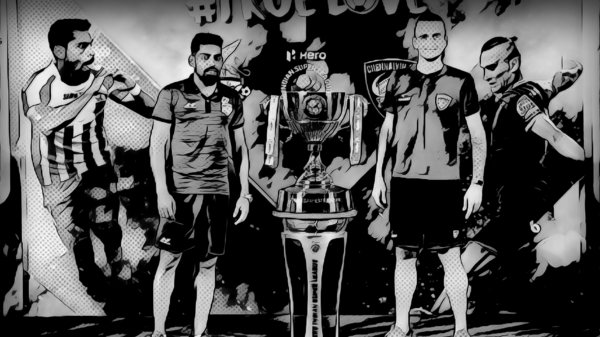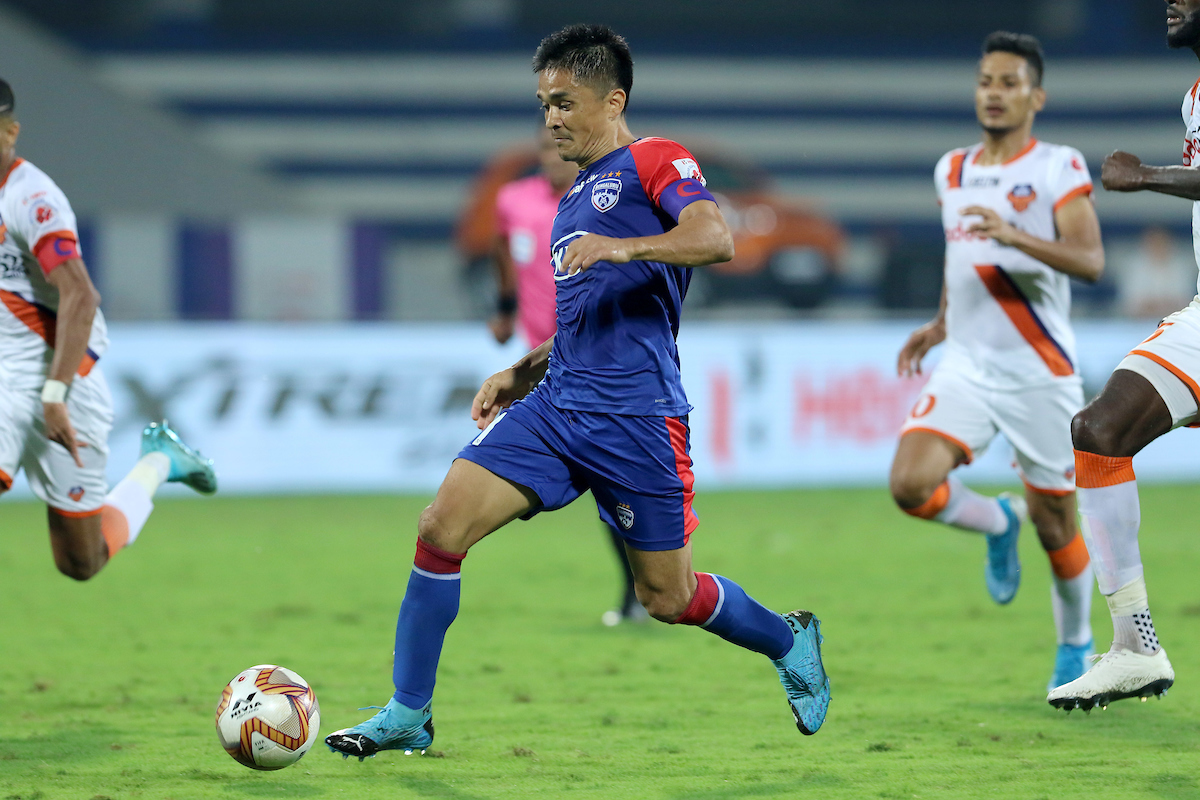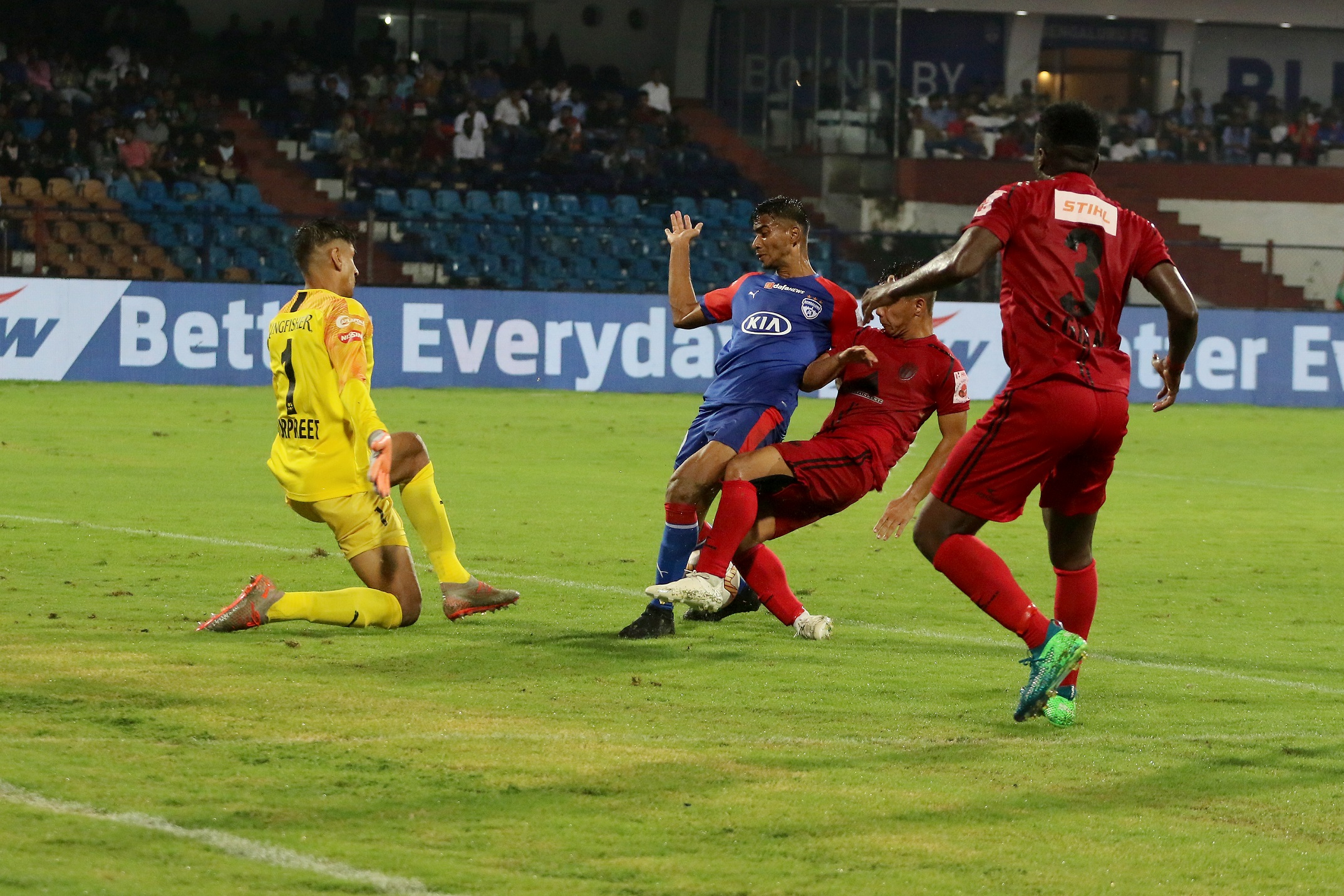2014 saw India’s first properly recognized football tournament, the Indian Super League. The ISL was met with much criticism from plenty, questioning if has it really helped Indian Football progress. Arjun Krishnan has his take on the matter, believing that the three month long fiasco did in fact take the right steps.
The general opinion among Indian football fans regarding the Indian Super League is surprisingly negative, and the tendency to class it as futile after just 3 months, unfortunate. The number of people using social media platforms like Twitter over the past month to criticize the concept of the Indian Super League leads me to believe that it is perceived as detrimental to the country’s progress; which, if true, means they don’t fully understand its design.
For those unaware of India’s position on the football map, they’re ranked 171st per the latest FIFA rankings behind Montserrat, an island in the Caribbean with a population of 4900 (as of 2012). This isn’t the problem; it’s simply the manifestation of several underlying issues including (but not limited to) the absence of effective grassroots initiatives, a football culture and infrastructure to facilitate youth development. These bottom-level aspects of football are vital for a footballing nation to succeed; and India’s problem begins and ends with the fact that it lacks in each of these departments.
The Indian Super League (ISL)
Contrary to what you might have read about the Indian Super League being “Football’s version of the Indian Premier League”, there are few similarities between the two. In fact, owing to the intricate nature of the challenge faced by the organizers of the ISL, the tournament is designed to function in an equally complex manner. The IPL’s main objective is to discover talented Indian cricketers; the ISL, in addition to discovering local footballers, is set up to revolutionise and revamp the entire national football scene – the cultural, political, and infrastructural aspects – which makes it a far riskier and more complex venture than the IPL. The tournament aims to fix the aforementioned core problems while simultaneously maintaining (and improving) the status quo. What we need to understand is that the Indian Super League is merely a vehicle set up to achieve certain long term goals. Expecting improvements overnight is naïve.
The basis of a sound footballing system is found in its roots. These include, among others, a solid grassroots setup. Grassroots represent the most elementary form of the game in any society. The sad reality is that though India is awash with talented footballers, they invariably go unnoticed because children are advised against a career in sport; and rightly so. Tournaments at the school level aren’t taken seriously. Here’s a painfully intriguing statistic I came across the other day – India has less than half a million registered footballers with a population of 1.3 billion, while the Netherlands with a population of 16 million, has over a million registered players.
I strongly believe that discovering talent at a young age is half the problem solved. Sachin Tendulkar highlighted the importance of the same, “Schools should encourage kids to take up sports. I am not saying that all of them should become sportspersons but we can become a healthier nation this way. The idea is to identify talent.”
The ISL grassroots program allows this – it is a multi-layered initiative that aims at exposing kids to football at a young age, thereby getting them to develop an interest in football, then cultivating said interest into something bigger. The umbrella program undertaken by the ISL aims to reach out to 500,000 children through in-school initiatives starting this year. These efforts will focus on introducing kids to the sport, providing professional training, and talent-scouting. The best talents will be inducted into professionally managed football academies for further development. Additionally, a second layer involves mandatory grassroots participation by all the franchises with the sole objective of promoting youth football in their respective regions. These franchises are required to pay an annual franchise fee of 15 crores (1,605,000.00 GBP) for 10 years, which includes a specific allocation of 2 crores (214,000.00 GBP) towards grassroots projects. The same shall be implemented in collaboration with UEFA and the English Premier League to ensure use of best international practices.
For the grassroots to be efficacious, it needs to be complemented by a culture that identifies football as more than just a hobby. FC Goa’s manager Zico summed up the significance of a football culture: “Football is very closely linked to culture. If a country’s culture is not in sync with its football culture, it’s difficult to make good players and build teams.” In this regard, the status quo is poor. I know people who’d rather stay up until 3 am to watch a low quality stream of Brazil’s Serie A than an evening telecast of the I-League on TV. This needs to change.
The first step towards creating a football culture is ensuring involvement. We need to make an effort to watch the I-League and other domestic cup competitions with the knowledge that it likely won’t live up to our expectations. You can’t bemoan the dire state of football in India when you, as an individual have the ability to change it. Initially, although it may seem like a drop in the ocean, more people are bound to follow.
“Why hasn’t it happened all this while?” you might ask. I’d cite the flawed administrative system as the root cause. It’s natural for people to want to be associated with the city they were born and raised in, and the organizers of the Indian Super League have, unlike the Indian Football Federation (the AIFF), identified this natural human tendency as a market to instill several aspects of fan culture – such as love and passion for the sport, loyalty to their teams, chants, pre-match rituals, etc – among fans. Novy Kapadia, a leading football expert in India, rightly believes that creating a football culture from scratch will take many years, which I think is primarily because we don’t see any reason to participate and get involved.
The acute lack of infrastructure is another major factor that has held Indian football back for decades because of the typically casual attitude shown by the AIFF towards the sport; the same attitude that forced the Indian national team to back out of the 1950 FIFA World Cup, held in Brazil. There are numerous examples to show that the AIFF is incapable of resurrecting the sport without external support:
- A world cup qualifier between India and the UAE in Delhi was played on a partially waterlogged pitch where the ball would die the second it hit the turf.
- Many I-League matches still kick off at 3 PM when the temperatures soar;
- The number of youth academies in a country of over a billion people is embarrassingly low.
- There aren’t enough football-specific stadia in India. The only stadium that is fit, as per FIFA criteria, to host a World Cup fixture is an athletics stadium in Chennai, a city that doesn’t even have an I-League team;
- There’s no telecast of matches at the national or the domestic level.
The list is endless.
Bob Houghton, former head coach of the Indian national team, narrated an incident in 2011: “The AFC (Asian Football Confederation) President came to India three years ago and said Indian football is 100 years behind. Then he came again last year and said nothing has changed.” Houghton strongly criticized the AIFF’s nonchalance: “I don’t know how long or how many times people have got to say that to get the authorities to come to grips with it.”
But it looks like there is finally a general realization that the AIFF cannot function in isolation, and that it’s beyond shameful for one of the fastest developing economies in the world to be invisible on the global football map.
The ISL is organized by private entities (Reliance, IMG and Star) that are ambitious, financially sound and genuinely believe the need for a “Football Revolution”. Infrastructurally, the first edition of the ISL is already seen by Indian players as a positive deviation from the past. Atletico de Kolkata’s Arnab Mondal said, “We won’t get the same facilities in the I-League.” Another Indian player expressed a lack of motivation at the prospect of returning to the mediocrity of the I-League.
Notwithstanding the substantial improvement, former Liverpool and England goalkeeper David James thinks the infrastructure in India is far from adequate, “They have to do some heavy investment. The infrastructure is nonexistent. There were 4 sides that were playing on cricket pitches. Training facilities were hard to come by.” He does, however, believe that if these areas are worked upon, “the potential is massive”. This amplifies the fact the necessary result can only be achieved in the long run.
That India will host the U-17 World Cup in 2017 serves as an enabling factor as it demands compliance with a certain minimum standard as prescribed by FIFA. This means the organizers will be under constant scrutiny until they meet said standard.
While the above are development-oriented issues that require serious long term commitment from the bottom up, the ISL exerts certain downward forces that allow the positive impact it creates to permeate into the lower levels of Indian football – in other words, short term fixes.
You’ll find the word ‘popularize’ used extensively in articles that talk about the Indian Super League. Popularizing football is pivotal to any hope of all-round development of the sport. History suggests that national football within has been out of favor among the masses since cricket took off in the late 1970s.
The ISL has taken several initiatives to remedy this:
- Social media becoming an indispensable part of our lives makes it a market for brands to create (and retain) customers. The Indian Super League and the 8 franchises have successfully sold themselves to millions of prospective customers over platforms such as Facebook and Twitter.
- The Indian Super League also roped in some big names to boost its brand – globally renowned players like Del Piero, Ljungberg, Trezeguet and Pires had been afforded something of a celestial status by Indian football fans during their primes. For these ‘heroes’ to now represent Indian cities is massive. They were responsible for not only pulling crowds but also to pass on the vast ocean of knowledge they had gathered over the years to the Indian footballers playing alongside them.
- As part of a family of Indian sportspersons, footballers have lived in the shadows of cricketers for too long. They were underpaid and unrecognized; but they finally have a stage that puts them directly under the spotlight. They can use the Indian Super League to develop into footballing icons that India so desperately needs.
- The unique shareholding patterns of the franchises enable them to popularize football within their regions in addition to helping them win the trophy. It’s no myth that cricket and Bollywood are two things that most Indians relate to, so franchises have incorporated these two factors into their corporate structures to try and seduce the football lovers and cricket fanatics, together representing India’s largest sport demographic. Many franchises also have affiliations with major European clubs and millionaire businessmen, which should take care of the technical and financial aspects. For example, Atletico de Kolkata is co-owned by Sourav Ganguly and Atletico Madrid; Pune City FC, by Hrithik Roshan, ACF Fiorentina; Chennaiyin FC, by MS Dhoni and Abhishek Bachchan; Delhi Dynamos affiliated with Dutch side Feyenoord.
Employing these mechanisms has so far proved successful, as the attendance figures suggest. The ISL recorded the highest average attendance (over 26,000) for a football league in Asia and the 4th highest in the world behind the Bundesliga, La Liga and the English Premier League. In terms of TV viewership, it received over 430 million views from across the globe.
An annual implementation of these efforts will no doubt benefit the game in the short run; however, whether such a high maintenance project will sustain itself in the long run is the important question. What’s certain, though, is that the Indian Super League is by no means a hindrance to Indian football, which has already hit rock bottom.
Written by Arjun Krishnan
- Indian Super League: Progress for Indian Football? - February 4, 2015
- Luis Suarez | Once Bitten, Twice Shy? Nah! - June 30, 2014
- Liverpool- Transfer Window of Lost Opportunity? - February 3, 2014


























































